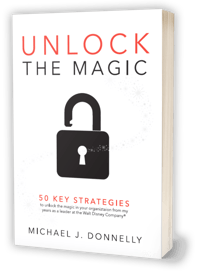What makes a visitor experience great?
If you polled your visitors and employees, their answers might include things like access to knowledgeable staff, engaging programs and exhibits, cleanliness, order, positive staff attitudes, signage, and accessibility, among others.
As leaders, you could spend months overhauling each of the above aspects to ensure you give your visitors an enjoyable experience. But if you focus on improving the features that have the most impact, ensuring guests have access to knowledgeable and friendly staff seems like the right place to start.
The key to improving the visitor experience is focusing on visitor-facing staff. For example, we know that organizations that prioritize customer service training to improve communication skills and competency directly impact customer experience and engagement. Staff that can quickly and efficiently point visitors toward their destination upon arrival or security personnel who greet each guest with a smile help define the experience at every touch point. This is especially true during times of change
In fact, we'd argue that the visitor experience is most vulnerable during an organizational change.
Success hinges on forewarned team members who know what is expected of them, as well as when and why these changes are happening. Whether rolling out a new internal system, process, or guest program, you must ensure all staff is informed and equipped to make the change. Constant and intentional communication campaigns help ensure your people aren't left in the dark during a crucial visitor experience upgrade.
Intentional communication is essential for creating buy-in during change.
If your people are the most important driver of change, then any change you make must be supported by a constant communication plan and training across all departments and levels, as well as throughout the duration of the training and changes.
Creating intentional communication channels helps manage and support change and directly correlates to the success of your initiative. It's your key to creating a culture of trust—well-prepared teams are more productive, efficient, and confident in their role.
Effective internal communication campaigns include the five "Cs" of communication:

- Comprehensive: Include the big picture in your message, as well as the "why," its intended impact, and the future vision.
- Consistent: Share the same message with everyone in the organization to eliminate confusion and avoid mistakes during rollout.
- Continual: Send your message on a regular schedule so employees can expect and anticipate them.
- Customized: Craft your message to embody the spirit of the initiative by leveraging branding, voice, and specific guidance tailored to each department.
- Convenient: Share your message across multiple formats, like Slack, email, or group settings. Make them easily accessible and easy to understand.
These components of effective change management communication address both knowledge and feeling. Notice that only 20% of the "Cs" are about what your people need to know, while the remaining 80% help people feel good about what they know.
The key is to commit to this before changes are made or announced. Time your messages to begin well before any actual changes occur. That way, you can field questions and address any informational or procedural gaps before the rollout that could affect your employees' willingness and ability to commit.
Constant communication campaigns also encourage feedback and process improvement.
Another benefit of continual communication is its ability to source employee feedback at the same time. At its core, communication campaigns address why a change is being made and how it will affect the organization. But a welcomed byproduct is the insight you gain from the front-facing employees working on the ground during the change.
Providing a way for employees to communicate with management, ask questions, and offer feedback does two important things: it gives your most important people a voice and it encourages program success. Consider how you'll gather, track, and learn from employee feedback throughout your communication campaign and accompanying training.
Surveys are helpful in gathering feedback at any stage of the change process. Other feedback methods include face-to-face check-ins, discussion forums on your intranet platforms, town halls, and Q&A sessions.
If you're preparing for organizational change, give just as much thought to your communications strategy as the change itself. Informed, well-equipped employees help guarantee a successful overhaul—as long as they're kept in the loop. When in doubt, over-communicate.
If you need help crafting a campaign that enlightens everyone involved, let us help you leverage the "5 Cs of Communication" to support a stronger, more productive organization today.
Want to be more EFFECTIVE? Follow us on the journey:
- Follow us on TWITTER: @DonnellyEffect
- Follow us on LINKEDIN: Donnelly Effect & Mike Donnelly
- SPARKS! Blog: Subscribe on the upper right hand side of this page =)
Mike Donnelly is a recognized expert, keynote speaker, facilitator and consultant in customer service and leadership development. Leveraging 20+ years of experience from The Walt Disney Company, he and his team help destination location clients and clients in various customer-facing industries create customer loyalty to achieve positive business results. Learn more at www.DonnellyEffect.com.




